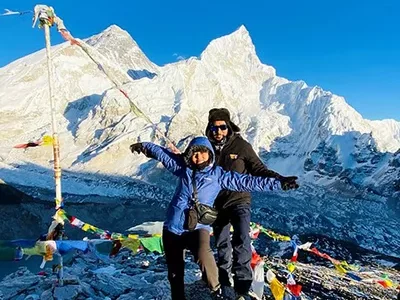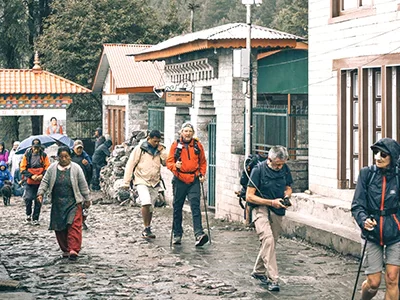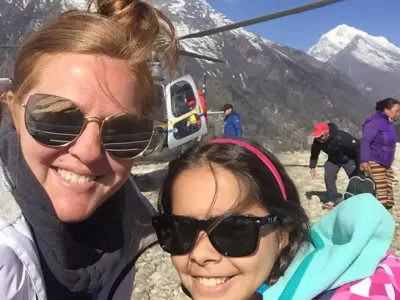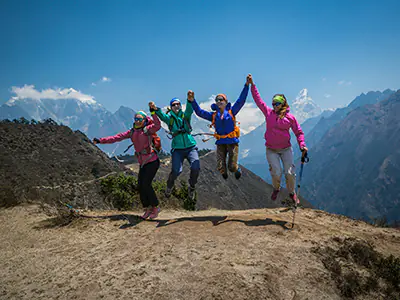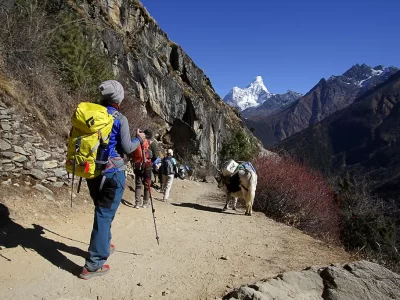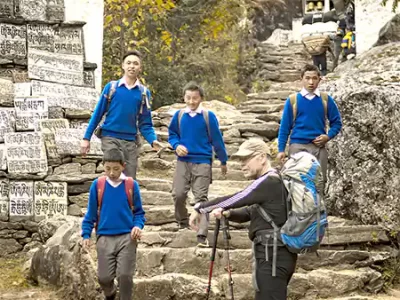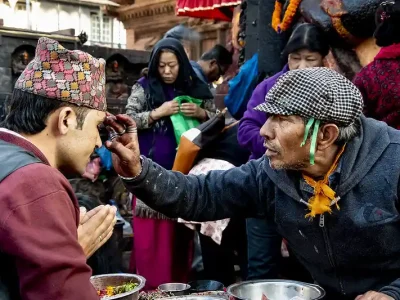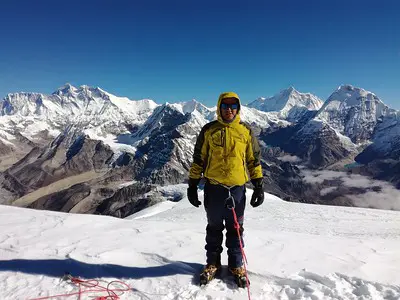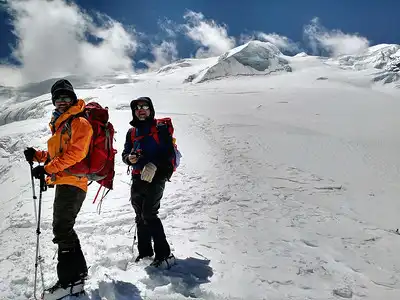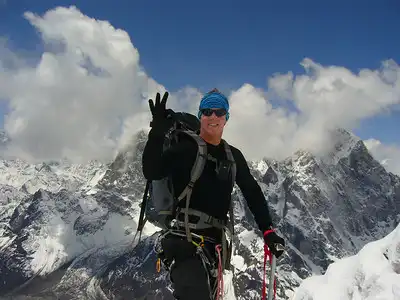Dingboche Nepal, a pivotal village on the Everest Base Camp trek, offers more than just a strategic location; it provides a deep cultural experience. Located at 4,410 meters, Dingboche rewards trekkers with panoramic views of the towering Himalayas. This village serves as a crucial rest stop and a serene community where trekkers can recharge amidst the majestic mountain scenery.
Strategically Positioned in the Khumbu Region
Dingboche lies in the heart of the Khumbu region, within the protected Sagarmatha National Park. Its location, surrounded by rugged terrain and dramatic landscapes, makes it an ideal spot for trekkers heading to Everest Base Camp.
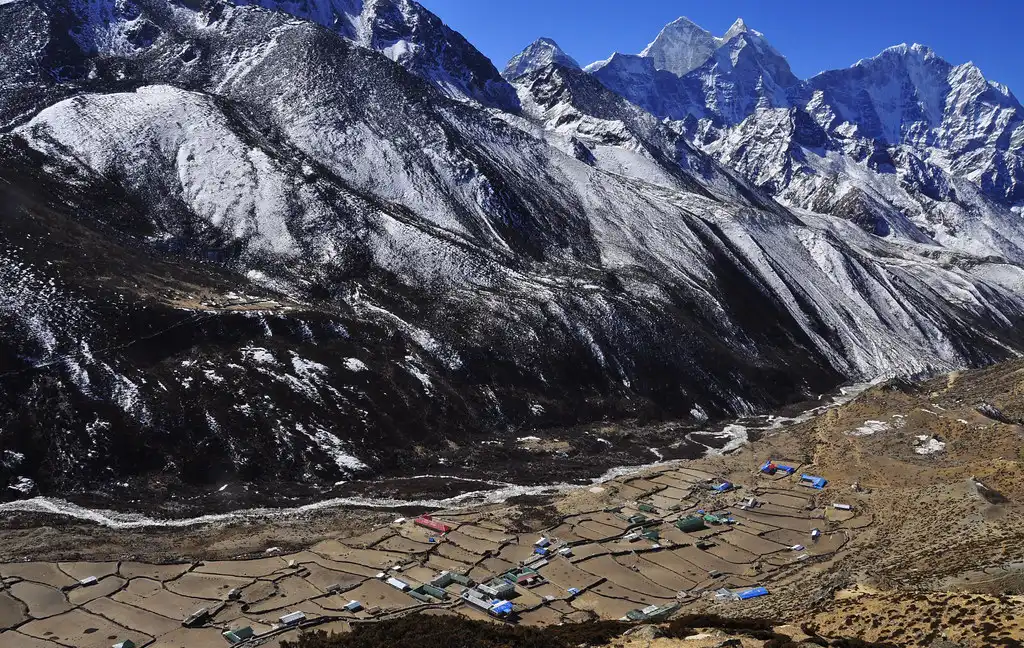
The village’s setting offers trekkers stunning views and allows them to explore unique high-altitude flora and fauna within this renowned conservation area. Dingboche’s strategic position enhances its role as a vital support point for those on the trek.
Significance as a Major Acclimatization Stop
This place plays a crucial role in helping trekkers acclimatize to higher altitudes. Spending time here allows trekkers to adjust to the reduced oxygen levels, which is essential to prevent altitude sickness. The village’s elevation and nearby moderate hikes, like the trail to Nagarjun Hill, provide perfect opportunities for gradual acclimatization.
This process ensures that trekkers are better prepared and healthier as they continue their ascent to Everest Base Camp. Dingboche’s role in acclimatization makes it an indispensable part of the trekking experience, contributing to both the safety and enjoyment of the trek.
Everest Base Camp Trek
Luxury Everest Base Camp Trek
Everest Base Camp Trek with Helicopter Return
Dingboche Altitude: A Critical Aspect of Trekking
Dingboche Nepal is at an impressive altitude of 4,410 meters (14,470 feet), making it one of the highest villages on the Everest Base Camp trek. Situated at a higher altitude, Dingboche rewards trekkers with breathtaking views while testing their ability to adjust to thinner air. Understanding and respecting this altitude is crucial for a successful trek.
Importance of Acclimatization at Dingboche Nepal
Acclimatization is essential when trekking at high altitudes, and Dingboche, Nepal, serves as a vital acclimatization point. At 4,410 meters, the reduced oxygen levels significantly increase the risk of altitude sickness, emphasizing the importance of acclimatization.
Spending a few days in Dingboche helps reduce the likelihood of altitude-related issues as trekkers ascend to even higher elevations. Proper acclimatization at this stage ensures that trekkers can continue their trek safely and comfortably.
Acclimatization Hikes around Dingboche
Several acclimatization hikes around Dingboche offer stunning views and help trekkers adjust to the altitude. One popular option is the climb to Nagarjun Hill, which provides a panoramic vista of the surrounding mountains, including Ama Dablam, Lhotse, and Island Peak. Other acclimatization hikes include:
- Dingboche to Chhukung Ri: This challenging hike takes you to 5,550 meters (18,209 feet) and offers spectacular views of the Khumbu Glacier and the surrounding peaks.
- Dingboche to Chukkung Valley: This more leisurely hike leads you through the scenic Chukkung Valley, home to yak pastures and traditional Sherpa villages.
- Dingboche to Imja Tse (Island Peak) Base Camp: This hike is an excellent option for those considering climbing Island Peak.
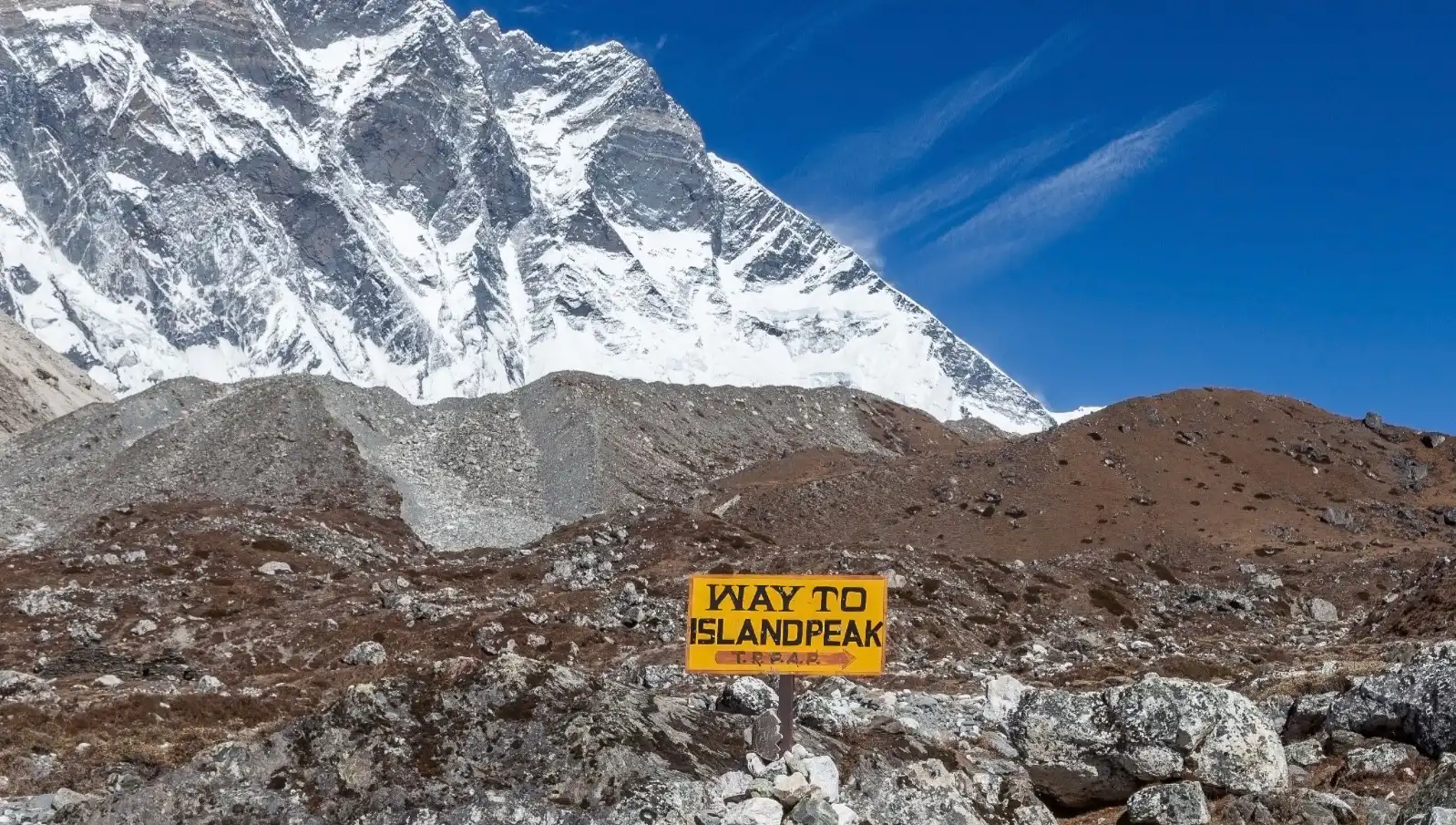
It provides a taste of the terrain and allows for further acclimatization.
Dingboche Weather Insights for a Safe and Memorable Trek
Dingboche, Nepal, experiences a typical high-altitude climate characterized by dramatic shifts and unpredictable nature. Understanding the Dingboche weather patterns is essential for anyone planning a trek to this Himalayan gem, especially those venturing further toward Everest Base Camp.
Shifting Seasons, Changing Scenes
- Spring (March-May): Spring, a favorite among trekkers, paints Dingboche with pleasant temperatures and clear skies. Enjoy pleasant daytime temperatures of 10 to 15°C, but be prepared for chilly nights dropping to -5 to -10°C. It’s the perfect time to soak in stunning mountain vistas and witness the vibrant bloom of rhododendrons.
- Autumn (September-November): Autumn offers ideal trekking conditions with stable weather, clear skies, and mild temperatures. Daytime warmth mirrors that of spring, while nights turn a bit colder. The season offers unparalleled visibility and a breathtaking display of fall colors.
- Summer (June-August): Summer ushers in Nepal’s monsoon season, and Dingboche receives its share of rainfall. Trails become muddy and slippery, and visibility diminishes. Daytime temperatures hover between 10°C to 18°C (50°F to 64°F), but nights remain cool. Due to challenging conditions, trekking during monsoon is discouraged.
- Winter (December-February): Winter in Dingboche is harsh, with heavy snowfall and frigid temperatures. Daytime temperatures plunge to -10°C to -15°C (14°F to 5°F), and nights can plummet to a bone-chilling -20°C or below (-4°F or below). Winter trekking demands experience and specialized gear.
Weather’s Impact on Your Trek
The weather in Dingboche can significantly shape your trekking experience. Being ready for unexpected changes and packing the right gear is vital. Here’s what to keep in mind:
- Chilly Temperatures: Even in prime trekking seasons, temperatures can drop dramatically, particularly at night. Dressing in layers is critical to staying cozy and comfortable throughout your trek. Pack thermal base layers, fleece jackets, insulated pants, warm gloves, and a hat.
- Gusting Winds: Dingboche can experience powerful winds, especially in open areas. A windproof jacket and pants offer essential protection.
- Snow and Rain: Be prepared for snow and rain regardless of the season. Bring a waterproof and breathable jacket, pants, and waterproof trekking boots.
- Intense Sun: High altitude intensifies the sun’s rays. Shield your skin and eyes with sunscreen, sunglasses, and a hat.
Everest Base Camp Trek for Beginners
Everest Base Camp Short Trek
Everest Panorama Trek
Dingboche to Lobuche Distance: Key Details for Trekkers
The trek from Dingboche, Nepal, to Lobuche covers a critical part of the Everest Base Camp trek, spanning approximately 8 kilometers (5 miles). This section usually requires around 5 to 6 hours to complete, depending on the trekker’s pace and acclimatization to the altitude. This leg of the trek challenges trekkers with its physical demands and marks a significant altitude gain, which is crucial for acclimatization.
Terrain and Notable Landmarks Along the Route
As trekkers leave this place, they navigate a path that gradually ascends through the alpine landscape, characterized by sparse vegetation and rocky terrain. The initial part of the trek is less steep, allowing trekkers to warm up before reaching the more challenging sections.
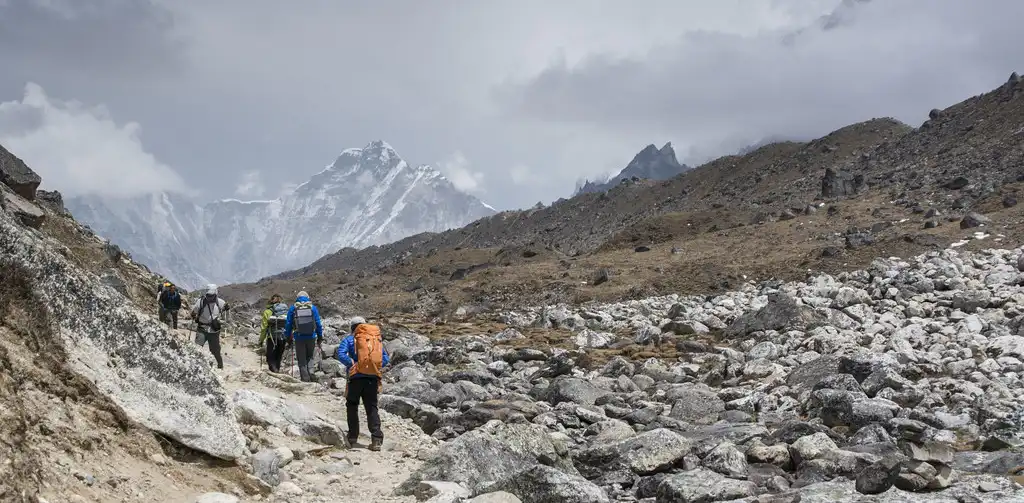
One of the significant landmarks on this route is the Thukla Pass, where trekkers encounter a series of memorials dedicated to climbers who have lost their lives in the Himalayas. This poignant spot provides a moment of reflection and a stark reminder of the dangers such high-altitude treks pose.
Following the pass, the trail becomes steeper and the landscape more rugged, leading up to Lobuche. This section offers dramatic views of the Khumbu Glacier and surrounding peaks, creating a breathtaking backdrop for the challenging hike.
The Strategic Role of Lobuche in the Trek to Everest Base Camp
At around 16,207 feet, Lobuche is indispensable in the Everest Base Camp trek. This small settlement is one of the last stops before trekkers reach Gorak Shep and the subsequent climb to Everest Base Camp.
Staying in Lobuche allows trekkers to acclimate to high altitudes, preparing their bodies for the even more challenging conditions ahead.
In Lobuche, trekkers can find basic accommodations and services to rest and refuel. The time spent here is critical for acclimatization and allows trekkers to assess their health and readiness before proceeding to the final stages of their trek.
Tengboche to Dingboche Distance: What You Need to Know
The trek from Tengboche to Dingboche, Nepal, is a scenic and moderately challenging section of the Everest Base Camp trek. Expect a 5-to-6-hour trek covering roughly 10 kilometers (6.2 miles). This leg of the trek offers trekkers breathtaking views of the Himalayan landscape, including the iconic Ama Dablam, and is an essential part of the acclimatization process.
Trail Highlights: Feast Your Eyes on Nature’s Beauty
The trek begins with a gentle descent from Tengboche, passing through lush rhododendron forests and offering glimpses of the Dudh Koshi River.
The trail gradually ascends as you continue, leading you through picturesque villages and yak pastures. The highlight of this trek is undoubtedly the awe-inspiring views of Ama Dablam, a majestic peak that dominates the skyline. Other notable landmarks along the way include:
- Pangboche: A traditional Sherpa village with a historic monastery.
- Somare: A small settlement with stunning views of Ama Dablam.
- Imja Khola Valley: A picturesque valley carved by the Imja Khola River.
Gradual Ascent: Acclimatizing to the Altitude
The Tengboche to Dingboche distance may seem moderate, but the gradual ascent helps trekkers acclimatize to the increasing altitude. This place, situated at 4,410 meters (14,469 feet), is a crucial acclimatization stop on the Everest Base Camp trek. Trekking from Tengboche (3,867 meters) to Dingboche gradually exposes your body to thinner air, helping to prevent altitude sickness.
From Dingboche to Everest Base Camp, Nepal: The Final Push
The trek from Dingboche, Nepal, to Everest Base Camp is the culmination of days of hiking, acclimatization, and anticipation. It’s a challenging yet rewarding trek that takes you through some of the most breathtaking landscapes on Earth. This final push to the foot of the world’s highest mountain typically spans two days, with overnight stops in Lobuche and Gorakshep.
The Journey: Key Stops and Distances
- Dingboche to Lobuche: The first leg covers approximately 8 kilometers (5 miles) and takes around 5-6 hours. The trail winds through the Khumbu Valley, offering stunning views of Ama Dablam and the Khumbu Glacier. The high altitude and challenging terrain demand careful pacing and rest stops.
- Lobuche to Gorakshep: This section is shorter, covering about 5 kilometers (3.1 miles), but the altitude gain is significant. The trek takes approximately 3-4 hours and leads you through the Khumbu Glacier moraine, a stark and awe-inspiring landscape. Gorakshep, at 5,164 meters (16,942 feet), is the final settlement before Everest Base Camp.
- Gorakshep to Everest Base Camp: The final stretch to Everest Base Camp is a relatively short 3 kilometers (1.9 miles) but can take 2-3 hours due to the altitude and uneven terrain.
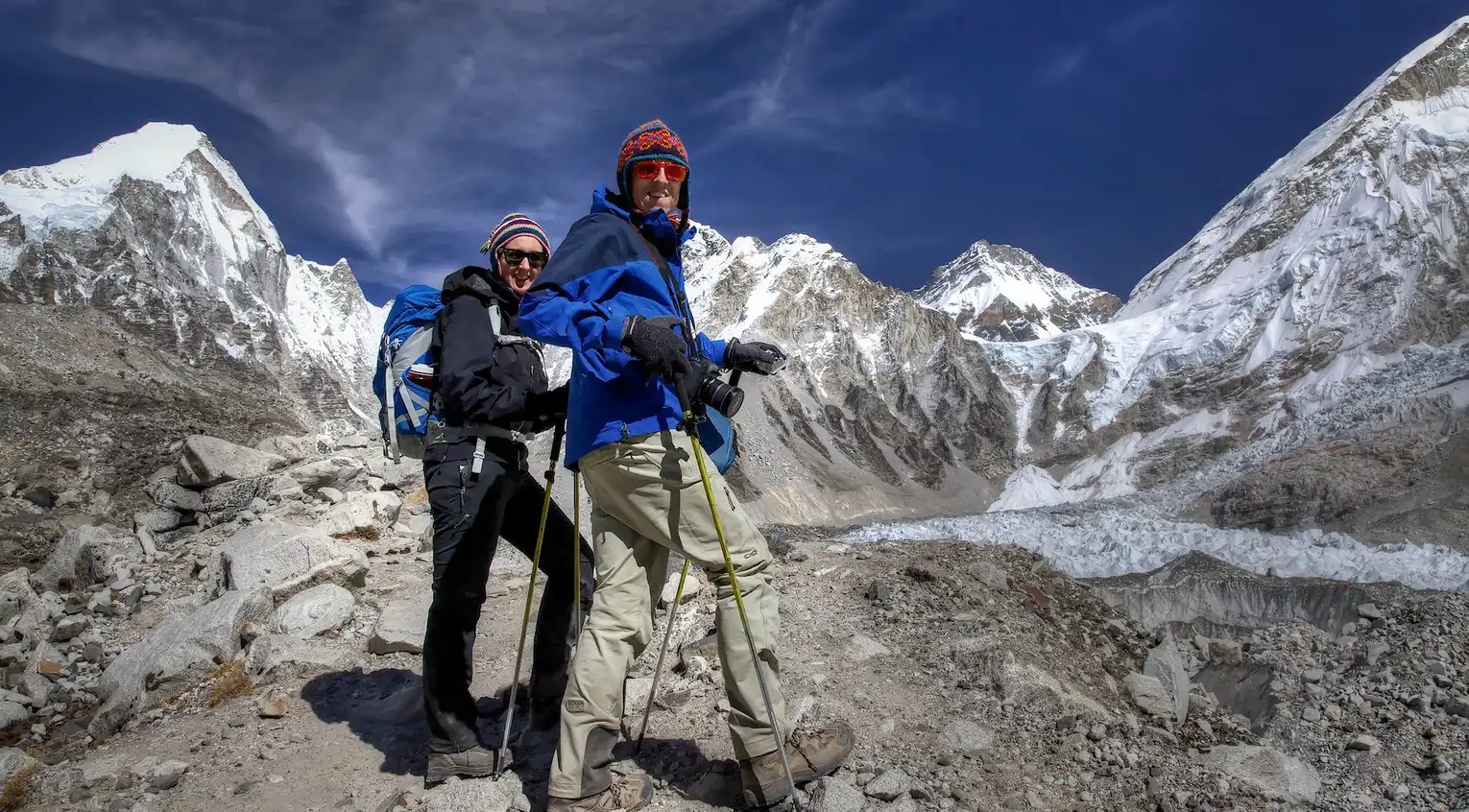
The trail winds through the Khumbu Glacier, offering glimpses of the mighty Everest and the surrounding peaks.
Dingboche: The Crucial Preparation Point
Dingboche’s altitude of 4,410 meters (14,469 feet) makes it an essential acclimatization stop before the final push to Everest Base Camp. Spending two nights here allows trekkers to gradually adjust to the thinner air, minimizing the risk of altitude sickness.
Although unpredictable, the Dingboche weather generally offers favorable conditions during the trekking seasons, making it ideal for short hikes and exploration to further aid in acclimatization. When you leave this place, your body should be well-prepared for the higher altitudes and challenging terrain that await you on the path to Everest Base Camp.
Experiencing Sherpa Warmth in Dingboche, Nepal
Beyond the breathtaking scenery and challenging trails, Dingboche, Nepal, opens a window into the vibrant Sherpa culture. This village is a testament to the resilience and heartwarming hospitality of the Sherpa people, who have thrived in this demanding high-altitude environment for generations.
Genuine Sherpa Hospitality
The Sherpas are renowned for their warm welcome and generous spirit, which you’ll experience firsthand in Dingboche. Local teahouses, offering trekkers food and lodging, become vibrant cultural exchange hubs.
Here, you can savor traditional Sherpa cuisine, engage in friendly conversations with locals, and gain a deeper understanding of their unique lifestyle. The village is also home to several ancient monasteries, like the Dingboche Gompa, providing a glimpse into the Sherpas’ spiritual lives.
These monasteries are not only places of worship but also serve as vital community centers. A visit to a monastery offers a beautiful way to connect with the Sherpa culture’s profound ties to Buddhism and learn about their cherished beliefs and traditions.
Life in the High Himalayas: Nurturing the Land
Dingboche’s high altitude and challenging climate pose unique obstacles to agriculture. However, the Sherpas have skillfully adapted, mastering the art of farming in this demanding landscape. Potato farming is a mainstay, with the fertile soil and cool temperatures creating ideal conditions for this resilient crop.
You’ll notice terraced fields etched into the mountainsides, a testament to the Sherpa’s ingenuity and resourcefulness. Beyond farming, the Sherpa community in Dingboche actively contributes to the trekking industry.
Many locals work as guides, porters, and teahouse operators, providing essential services to fellow adventurers. This mutually beneficial relationship between the Sherpas and visitors fosters economic growth and meaningful cultural exchange.
Embrace the Local Culture
When visiting Dingboche, show respect for the local culture by following these tips:
- Dress modestly, especially when visiting monasteries.
- Ask permission before taking photos of people or religious sites.
- Support the local economy by buying souvenirs and handicrafts from shops and teahouses.
- Learn a few basic Nepali phrases. A simple “Namaste” (hello) or “Dhanyabad” (thank you) goes a long way.
Finding Comfort in the Himalayas: Accommodation and Amenities in Dingboche, Nepal
After a day of trekking through the stunning landscapes surrounding Dingboche, Nepal, you’ll be ready for a warm welcome and comfortable rest. Comfortable lodging options are available in the village for acclimatization.
Teahouses: A Traditional Himalayan Experience
Teahouses are the most common accommodation in Dingboche, offering basic yet cozy rooms with shared bathrooms. These family-run establishments provide a unique opportunity to experience Sherpa hospitality and connect with the local culture.
You can enjoy warm meals in the communal dining area, socialize with fellow trekkers, and share stories around the yak-dung stove.
Lodges: A Touch of Comfort
Several lodges in Dingboche offer private rooms with attached bathrooms, hot showers (often solar-powered), and even Wi-Fi access for those seeking more amenities.

These lodges typically have more comfortable beds and offer more food options.
Amenities for Trekkers
In addition to accommodation, this place provides a range of amenities to cater to trekkers’ needs:
- Bakeries: Indulge in freshly baked pastries, bread, and cakes at one of the village’s bakeries.
- Equipment Shops: If you need to rent or purchase trekking gear, you’ll find shops selling everything from hiking boots to sleeping bags.
- Charging Stations: Many teahouses and lodges offer charging facilities for your electronic devices, although you might need to pay a small fee.
- Medical Facilities: Medical professionals staff a health post in Dingboche to address health issues.
Choosing Your Accommodation
When selecting your accommodation in Dingboche, consider your budget, priorities, and the weather. Booking in advance during peak season is advisable to secure your preferred accommodation, especially those with amenities.
If you’re on a tight budget, teahouses offer a more affordable option. Remember that regardless of your choice, the warm hospitality and breathtaking views of Dingboche will make your stay unforgettable.
Essential Tips for a Safe and Memorable Trek
Preparing for a trek to Dingboche, a picturesque village high in the Himalayas, sets the stage for an unforgettable adventure. Thorough preparation is critical to ensure a safe and enjoyable experience. Let’s explore practical tips for your trek to and from Dingboche, Nepal.
Acclimatization: Your Key to Success
Dingboche sits at a lofty 4,410 meters (14,469 feet), making acclimatization a critical part of your trek. As you ascend to higher altitudes, the air thins, requiring your body to adapt gradually.
Plan to spend at least two nights in Dingboche to acclimate properly. Take leisurely hikes and explore the surroundings, but avoid pushing yourself too hard. Remember, a slow and steady pace is the winning strategy for high-altitude trekking.
Hydration and Nutrition: Fueling Your Adventure
Staying hydrated is paramount at high altitudes. Drink plenty of water throughout the day, even if you don’t feel particularly thirsty. Consider supplementing with electrolyte drinks or herbal teas for added benefits.
A balanced diet is equally essential to fuel your body for the trek. Include ample carbohydrates, protein, and healthy fats in your meals. Pack high-energy snacks like nuts, dried fruits, and energy bars to keep you going on the trail.
Packing Essentials: Preparing for the Elements
Having the right gear enhances your trekking experience significantly. Here’s a checklist of essentials to pack for your Dingboche trek:
- Clothing: Layer up for varying temperatures! Pack thermal base layers, fleece jackets, insulated pants, a waterproof and windproof jacket, trekking pants, sturdy hiking boots, warm socks, gloves, a hat, and a buff.
- Gear: A comfortable backpack, sleeping bag, sleeping mat, trekking poles, headlamp, water bottles, water purification tablets, sunscreen, sunglasses, first-aid kit, and personal toiletries are all must-haves.
- Other Essentials: Remember your camera, extra batteries, cash, passport, permits, and insurance documents.
Additional Tips for a Smooth Trek
- Start Early: Begin your trek early in the day to avoid the afternoon heat and potential thunderstorms.
- Pace Yourself: Avoid rushing the trek. Take your time to savor the scenery and take breaks whenever needed.
- Listen to Your Body: If you experience any symptoms of altitude sickness, descend to a lower altitude immediately.
- Consider a Guide or Porter: A local guide offers valuable regional insights and ensures safe trail navigation. A porter can carry your heavy backpack, allowing you to focus on enjoying the trek.
- Respect the Local Culture: Dress modestly and be mindful of local customs and traditions.
Dingboche, Nepal: A Himalayan Haven on the Everest Base Camp Trek
In the heart of the Himalayas, Dingboche, Nepal, stands as a vital landmark on the trek to Everest Base Camp. A must-visit for any trekker, this location boasts stunning scenery, cultural richness, and strategic importance.
The village’s role as an acclimatization stop must be balanced, allowing trekkers to adjust to the Dingboche altitude of 4,410 meters (14,469 feet).
A Pause for Preparation and Appreciation
Dingboche offers a unique blend of adventure and tranquility. It serves as a crucial stepping stone on the challenging trek to Everest Base Camp while also providing a chance to appreciate the serenity and cultural richness of the Himalayas.
Remember, the Dingboche to Everest Base Camp trek is about reaching the destination and embracing the entire experience. Take your time in Dingboche, allow your body to acclimate, and explore this remarkable village’s wonders.
Hike to nearby viewpoints, engage with the local Sherpa community, and savor the delicious food in the teahouses. By doing so, you’ll not only increase your chances of a successful summit but also create memories that will last a lifetime.
Key Takeaways
- Dingboche’s altitude and unpredictable Dingboche weather require thorough preparation and respect for the mountain environment.
- The Tengboche to Dingboche distance and the Dingboche to Lobuche distance offer acclimatization and scenic beauty opportunities.
- Embrace the unique experiences Dingboche offers, from acclimatization hikes to cultural immersion.

